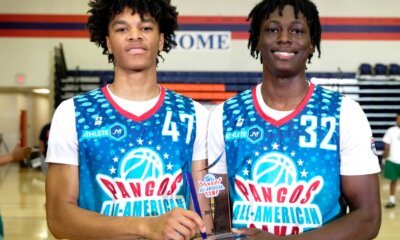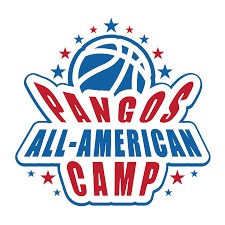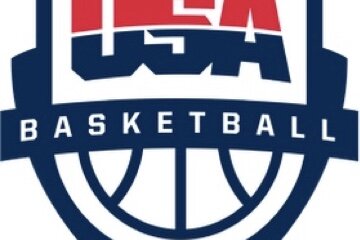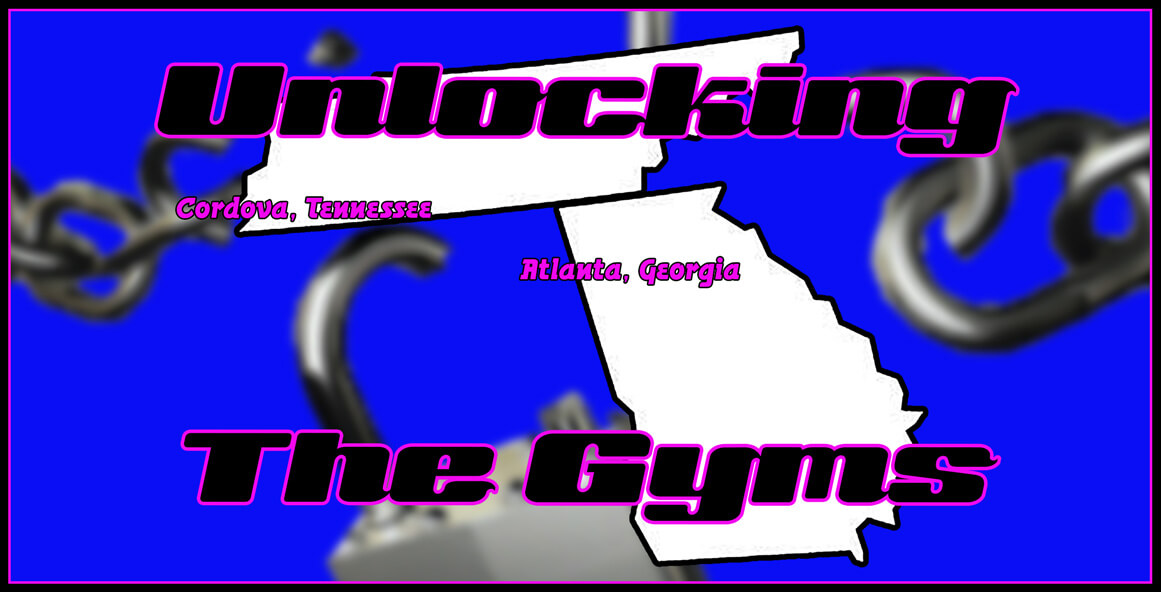
The advent of the 2014 Nike Elite Youth Basketball League has changed the landscape and perspective of club basketball for athletes, teams and events. Now that we’re a couple weeks removed from the first round of games held in conjunction with the Nike Boo Williams Invitational and the dust seemingly has settled just a bit…it’s time to see how those changes are being perceived and interpreted. Some folks are thrilled, some think the jury is still out and there are those who have found out that “landscape change” entails a steep, uphill climb. In this article, Lisa Bodine and I offer our take on a few of the questions that surround Nike’s innovative approach to their sponsored teams, club events and the game itself.
With one round in the books and each team having played five games, what are the general perceptions of the Nike EYBL and its impact on the club basketball landscape?
Lewis – Overall the opinions and perceptions have been very positive. Recruiters and evaluators had the advantage of a defined schedule and benefit of challenging match ups throughout the event. The club coaches had the opportunity to scout and prepare more than in the past and the players had an extended and vested interest in games other than their own. The long term implications of even a single game led to an ultra-competitive scoreboard in Hampton that saw over half of the games finish with a final margin of 10 points or less. The most overlooked impact comes from that same competitive element. Any opportunity to improve the game itself has to lead to a tip of the hat to the decision behind it. NCAA legislative changes and constant recruiting calendar manipulations are seldom made with thought or regard given to the actual advancement of the game itself. Having players compete with the dangling carrot of Nike Nationals on the line to go with the watchful eyes of college coaches on the sidelines sets a higher bar for players both in terms of outcome as well as progression of skills. Creating any environment that expects and demands more of prospects can’t help but be viewed as a tremendous positive.
Bodine – There are some naysayers out there who have expressed less than positive opinions about EYBL format but those people tend to have a narrower view in general of the grassroots basketball landscape. The women’s game is in a transitional phase. While it is more popular than ever the number of youth participating is declining. Fostering an environment of competition like the EYBL is creating will give younger players an achievable goal if they want to participate in the future.
The Monday following the Spring NCAA Evaluation Period has always led to second guessing by coaches, parents and players about roster and club choices. This year Nike teams, with long term implications riding on the outcome of each game, are looking at different strategic approaches particularly with regard to playing time and substitutions…What’s the reaction been among the coaches and those players who saw less action than they may have in the past?
Bodine – Unfortunately the wave of discontent started before the weekend was over and there were quite a few players and parents who didn’t hide their feelings. Honestly, I hope this opens up lines of communication between players and parents, it’s time to get real. This may be a good time for parents to step back and allow their daughters to find out why they didn’t get the playing time they expected. Players need to do an honest self-assessment of where they are skill wise as a basketball player. If you are a player who is getting recruiting traffic from lower division programs it is probably not in your best interest to spend the summer recruiting period sitting on the bench. Based on the feedback I have received, underclass parents and players are definitely paying attention to this new level of competition. Some are going to have to make hard decisions about their choice of club programs. The bottom line is that if a player wants to be a solid performer in the EYBL, they have to take ownership of their situation and do everything in their power to improve their basketball skill level.
Lewis – For the programs it’s a fine line between stocking your roster with the most talent and at the same time doing right by an athlete who won’t be well served in the recruiting process by sitting on the bench. Of course, as Lisa mentioned, it’s imperative for a player and their parents to be objective about ability and potential. An overestimation of what a player can do on the floor can lead to disappointment and dissatisfaction. The competitive nature of the EYBL doesn’t lend to spreading the minutes around and it may be the first time some players have had to take ownership of creating their own opportunity on the court. Several coaches knew coming in that substitutions and playing time were going to require a different approach depending on game situations and results. Another felt “guilty” about the minimal minutes afforded some of his players but acknowledged that ultimately the game itself still dictated his decisions. The challenging aspect of that may come in the form of players who come up through a program but aren’t going to be in the primary rotation once they reach the showcase team of a club. The pluses of being on a Nike team may be outweighed by the need to move to another club to get on the floor both for basketball and recruiting reasons. There’s an obligation on the part of Nike sponsored teams to compete at their highest level and that approach negates any past commitment to an exposure first mentality. The reality is that “E” in EYBL stands for elite…not equal.
Nike is permitting roster additions from participant’s younger teams or outside programs however the rosters of the other Nike EYBL teams are off limits in the “free agency” market…What implications could there be from new players on the bench during the second round of league play?
Lewis – Obviously, the advantage of adding talent to a roster is that it could improve a team’s chances in any game or with regard to their overall odds to punch a ticket to Augusta in July. Teams who were successful during the first round are unlikely to mess with lineups or chemistry before the July events in Chicago and Franklin. On the other hand, teams on the edge or those who stumbled out of the gate will have to give careful consideration to the benefit – risk equation before adding new talent. The benefit is obvious if the added player can bolster a weakness, offer a missing element or provide additional depth. The risk element is substantial in several ways. For a both coaches and players the actual adaptation to on the floor is hardly a “lock” particularly if the addition will only be playing in the upcoming EYBL events rather than a full club schedule. Looming more is the fact that new players will be taking minutes from team members who have been there from the start. Resentment from players who feel they’ve “earned” their opportunity or parents who naively contend that they’ve “purchased” playing time for their daughter is not a sound basis for the integration of roster additions. Lastly, it’s imperative to define every detail of a new player’s role, expectations and the parameters of their commitment to their new team. Being on different pages can negate any contributions that can be brought to the table by even the best player.
Bodine – It will be interesting to see if teams look to fill roster needs with younger players within their own organizations. As they say “the ball don’t lie” and if there are capable underclassmen ready to play at this level then it would be nice to see them given the chance. To Mark’s point about resentment by players and their parents who might see their roles diminished, they are going to have to deal with the harsh reality of choosing to participate on an elite level team. EYBL coaches who have good relationships with other club coaches in their region may be able to pick up a quality player who can have an immediate impact.
Talk about the impact of the EYBL on non-Nike programs and their athletes.
Bodine – Non-Nike teams are actually in a great position to grow their programs and continue to grow the grassroots game. Again, they have to understand the players in their programs and the level of colleges who will be recruiting their players. A strong club program will most likely pick up a few players who weren’t satisfied with their playing time on an EYBL team. The opposite of this is when one of their current players leaves to join a Nike team. Naturally, there are going to be some hurt feelings but taking a negative posture isn’t going to benefit the adults or the players involved. If a coach is dedicated to helping kids and providing a true platform for them to develop as student-athletes, they should not waste time and energy worrying about what logo is on someone else’s uniform. Even though the EYBL team rosters are filled with top players, there are plenty of college prospects who need an opportunity to play. As a club coach, keep your gym doors open.
Lewis – Without a doubt the potential roster changes Lisa spoke of, both incoming and outgoing, will impact non-Nike teams. However, if a club is doing its job in terms of developing players, competing in the right events and cultivating the necessary relationships with recruiters they shouldn’t sweat potential roster poaching to any great degree. It can and will happen, but they may well be on the receiving end of an unhappy Swoosh lineup departure as well. Beyond that, one of the complaints heard this spring with the advent of the EYBL was the inability of those that are non-Nike to get on the floor with those that actually are Nike teams. It’s no secret that many programs have gladly ridden the coattails of high profile opposition enjoying the benefit of recruiters who may be courtside to see opposing prospects. And rightfully so. Regardless of why a college coach is in the house, the exposure is there for all the players on the floor. At the same time, it’s not the obligation of Nike or any other sponsor to provide that accessibility. Don’t be quick to point the finger at our friends in Beaverton and the “closed” elements of the EYBL. Their undeniable commitment to grassroots girls’ basketball far outreaches their return on the bottom line. It’s also important to remember that the EYBL encompasses only two events that would impact non-Nike teams as Nike Nationals has always been limited to sponsored teams since its inception.
After the first set of games, five teams are undefeated, three stand at 4 – 1 while 17 teams have either a 3 – 2 record (6) or a 2 – 3 (11) mark. With qualifying teams for Nike Nationals having to finish in the top six of their respective divisions, what’s the standard going to be to punch a ticket to Augusta?
Lewis – With the lineup of Nike Nationals ultimately coming from divisional results, it’s not out of the question that teams with lesser records will get the nod over those with a win or two more. There are seven teams with just one win or an “0 -for” performance on their resume after round one. It’s hard to imagine that, even with impact roster additions, their prospects will entirely be in their hands. Their on court resurrection will need a shot in the arm from the collapse of another team’s effort to climb back into the mix for Augusta. Those six teams at 3 and 2 should be in good shape if they duplicate or improve on that record over the next five games but will have little margin for error. The 11 others who come in at 2 and 3 have their work cut out for them. The Taurasi Division has five of those programs while the Moore Division has three. Saying that there is no breathing room may well be an understatement and they certainly will see a catastrophic impact on their chances with a loss to an opponent of the same record. The eight teams who lead the way into July should be in good shape barring injury, insurrection or a five game on floor melt down.
Bodine – With so many good teams sitting in the middle of their divisions there is a possibility that the top six will ultimately be determined by tie breakers. Being undefeated after Hampton is a nice accomplishment but at this level of competition those squads may have a tougher road because they’re going to get everyone’s best game. Since there are two months to make adjustments and work on team chemistry, it won’t be surprising to see a few squads who didn’t look their best in Hampton make a competitive push towards the championship round.
What teams have positioned themselves to make a run at top honors at the end of July?
Bodine – Obviously, all the teams that went undefeated are in a great position to make a championship run. Cy-Fair is strong at every position and The Fairfax Stars have a strong core nucleus. Both teams have veteran coaches who have done well on the elite circuit as does North Tartan. Just because teams happen to have a few losses doesn’t necessarily mean they are totally out of playoff contention. I look for the Central Florida Elite and Tennessee Flight to make a strong push. As far as newcomers, the Georgia Pistols and the Carolina Flames have solid talent and should be able to make the necessary adjustments to remain competitive for the championship.
Lewis – I would have to agree with Lisa that the undefeated teams as well as the 4 – 1 teams look to be best situated to make a run at top honors. Once in Augusta the win – loss records really won’t matter beyond seeding and in the end someone who wants to lay claim to bragging rights will have to take on all comers. That being said, it was hard not to be impressed by Cy-Fair across the course of play in Hampton. Their 19.8 ppg average margin per win leads the way among the five that remain undefeated after the first round of play. North Tartan captured their wins by a 14.6 average, Fairfax Stars 11.2 per game, Texas United won by 10.8 each time out followed by the Georgia Pistols at 10 per game. Those with a single loss (Boo Williams, Cal Stars and Spiece Gym Rats) all had their moments and are poised to make runs of their own. Before too much stock is put in the results from Hampton it’s important to keep in mind those 40 plus single digit games and how easily things could change next time out.
Mark Lewis is a national evaluator and photographer for Blue Star Basketball as well as the lead columnist for Blue Star Media. Twice ranked as one of the top 25 Division I assistant coaches in the game by the Women's Basketball Coaches Association (WBCA), he logged 25 years of college coaching experience at Memphis State, Cincinnati, Arizona State, Western Kentucky and Washington State. Lewis serves as a member of the prestigious McDonald’s All-American selection committee as well as the Naismith College Player and Coach of the Year committees.

Latest Articles
-


Christopher Lawlor
/ 2 days agoSTARS SHINE: Bailey, Costello earn Co-MVPs at 23rd Pangos All-American Camp in Las Vegas; three Santa Margarita (CA) players recognized
LAS VEGAS – The Pangos All-American Camp did not disappoint. For three days the...
-


Christopher Lawlor
/ 4 days ago23rd Pangos All-American Camp tips off in Las Vegas with nation’s elite players congregating for national showcase event
LAS VEGAS – The summer circuit is nearly two months old but it really...
-


Christopher Lawlor
/ 1 week agoU16 USA Women’s Basketball National Team roster selected for 2025 FIBA AmeriCup in Mexico from June 16-22
COLORADO SPRINGS, Colo. — USA Basketball announced today the 2025 USA Women’s U16 National...
-
Christopher Lawlor
/ 1 week agoU16 USA Men’s Basketball National Team roster chosen for 2025 FIBA AmeriCup next week in Juarez, Mexico
COLORADO SPRINGS, Colo. – The team is set and now for the games South...




